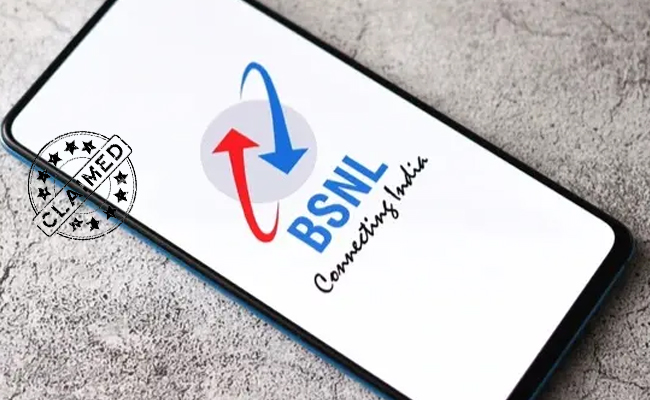Shipment of ‘Make in India’ smartphones grew by 7% in Q1 2022: Report
By MYBRANDBOOK

The latest research from Counterpoint Technology Market Research has revealed that shipments of “Made in India” smartphones grew by 7% year-on-year (YoY) in the first quarter (Q1 2022) to over 48 million units. This is because the local smartphone manufacturing ecosystem stayed resilient amid global component shortages.
According to Senior Research Analyst Prachir Singh, smartphone manufacturing is increasing in India. “In 2021, the shipments of ‘Made in India’ smartphones crossed 190 million units. The increasing smartphone demand in India as well as increasing exports are the major reasons for the continued growth. Support has also come from the Indian government’s various initiatives to increase local manufacturing. However, the manufacturing of feature phones declined 41% YoY in Q1 2022 due to falling demand for the past few quarters,” he said.
On the manufacturing landscape and strategies, Singh said, “In the smartphone segment, the third-party EMS (electronic manufacturing services) providers captured 42% share in local manufacturing, registering 4% YoY growth in terms of shipments. Bharat FIH was the top EMS provider in Q1 2022, followed by Dixon Technologies. However, in-house manufacturing capabilities have also grown. In-house smartphone manufacturing share crossed 58% during the quarter. OPPO led the ‘Made in India’ smartphone shipments with a 22% share, followed closely by Samsung at 21%. In the feature phone segment, however, EMS’ share crossed 68% in Q1 2022. Lava led the ‘Made in India’ feature phone shipments with a 21% share. Among the third-party EMS providers, Flex, Bharat FIH and Dixon Technologies led the feature phone segment.”
Research Analyst Priya Joseph said that the government’s focus has been to make India a manufacturing hub and it has taken a lot of initiatives in this direction. “The Production Linked Incentive (PLI) scheme for mobile handsets proved to be an accelerator for local manufacturing. Similar PLI schemes have been introduced by the government in other strategic sectors, such as solar, semiconductors, automotive and electronic products. In the current times of uncertainties triggered by the pandemic, war and other factors, the government feels it is important to have a resilient economy that can sustain such shocks. Signing up for the recent Indo-Pacific Economic Framework for Prosperity (IPEF) is one such example of the government’s intention to make clear its goal of becoming the next tech hub,” she said.
Going forward, Counterpoint Research believes India’s handset manufacturing will grow by 4% YoY in 2022. Also, the increasing local value addition will drive the idea of “Aatmanirbhar Bharat” (Self-reliant India). The government is focusing a lot on increasing localization, and with the Semiconductor PLI, it aims to make India a prominent destination for semiconductor and electronics manufacturing.


Download masked Aadhaar to improve privacy
Download a masked Aadhaar from UIDAI to improve privacy. Select masking w...

Sterlite Technologies' Rs 145 crore claim against BSNL rejecte
An arbitrator has rejected broadband technology company Sterlite Technolog...

ID-REDACT® ensures full compliance with the DPDP Act for Indi
Data Safeguard India Pvt Ltd, a wholly-owned subsidiary of Data Safeguard ...

Happiest Minds brings in an innovative GenAI chatbot
Happiest Minds Technologies has announced the new GenAI chatbot - ‘hAPPI...


Technology Icons Of India 2023: Honorary Prof. N. Balakrishnan
Prof. N. Balakrishnan is an Indian aerospace and computer scientist. H...

Technology Icons Of India 2023: Lt Gen (Dr.) Rajesh Pant (Retd.)
LT Gen(Dr.) Rajesh Panth (Retd.), National cyber security coordination...

Technology Icons Of India 2023: Byju Raveendran
Byju Raveendran is the founder of edutech start-up Byju’s. Raveendra...


BBNL empowering rural India digitally
BBNL provide high speed digital connectivity to Rural India at afforda...

RailTel connecting every corner of India
RailTel is an ICT provider and one of the largest neutral telecom infr...

INDIANOIL helps reach precious petroleum fuels to every nook and corner of the country
IndianOil, a diversified, integrated energy major with presence in alm...


EXCLUSIVE NETWORKS SALES INDIA PVT. LTD.
Exclusive Networks is a globally trusted cybersecurity specialist hel...

BEETEL TELETECH LTD.
: Beetel is one of the oldest and most reputed brands in the Industry,...

TEXONIC INSTRUMENTS
Texonic has carved a niche for itself in the Technology Distribution i...